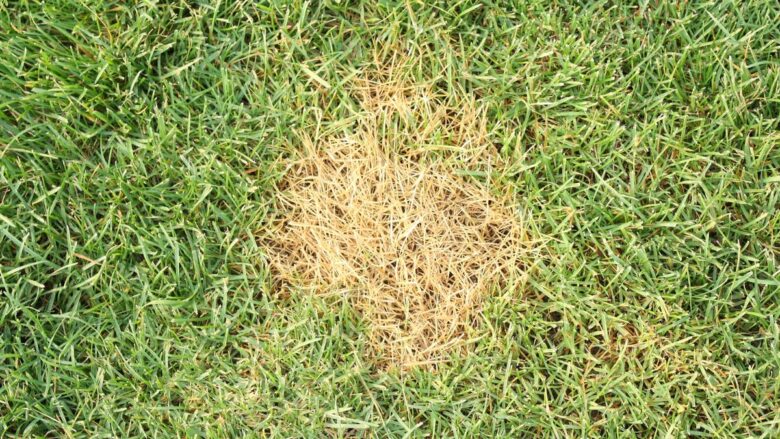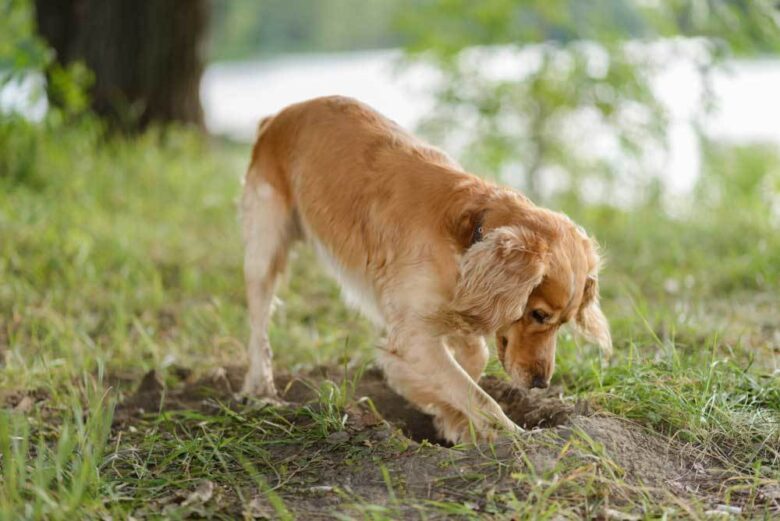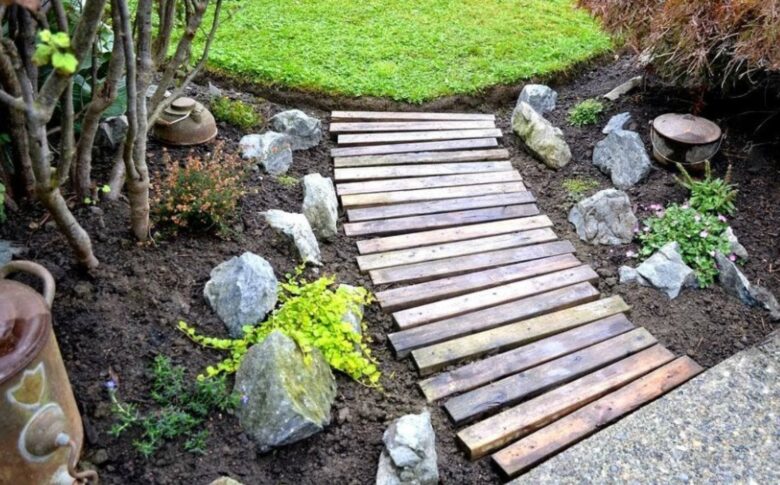When you own a house with a lawn, you know the difficulty of keeping your grass green and in peak condition, especially if you’re a dog owner! If you’ve noticed your yard suffering this year and your dog is the culprit, whether it’s due to frequent digging, dry yellow patches of grass, or the dog getting into the garden you worked so hard to build, we’ve got the top 7 lawn hacks for you!
Contents
1. Yellow Patches of Grass

Source: getsurrey.co.uk
If you have a small breed dog like a Maltipoo from mydoodlemaltipoos.com for example, who has a tiny bladder, even the smallest amount of dog pee can ruin your lawn, leaving dead patches of yellow grass. Unfortunately, you can’t stop a dog from relieving themselves altogether; that’s just part of dog ownership. However, you can take some additional steps to prevent your lawn from dying off in those unsatisfactory yellow patches of grass caused by dog urine.
One crucial thing to note is the actual cause of your grass yellowing after a potty break; nitrogen. Nitrogen is the main chemical component responsible for killing off healthy grass. Many fertilizers contain additional levels of nitrogen, and when combined with pet urine, the overwhelming amount of this chemical can burn up and kill your precious lawn. The first approach you can take is to change or reduce the amount of fertilizer you’re using (if any) in combination with watering down and diluting the area with water after your dog eliminates on the grass. Through trial and error, you may find that the reduced level of nitrogen is enough to save your grass! But, if you continue to have yellow patches caused by dog pee, the next step is replanting the area using a grass seed highly resistant to nitrogen. Ryegrass and Fescue are the most dog-friendly grasses resistant to the nitrogen found in dog pee.
2. Unsafe Plants for Your Dog
Sadly, many plants are harmful to dogs, such as castor bean, hemlock, mistletoe, and English ivy. These plants may look stunning in your yard or garden, but they can be deadly to your furry friend. Avoiding toxic plant life may not fix your lawn directly, but it will prevent hefty vet bills later on. Saving a few thousand dollars in emergency vet care will keep your funds available to improve and care for your lawn long-term! Not to mention you won’t have to deal with the results of a sick dog who ingested such plants; that’s right, no one wants diarrhea or dog puke unexpectedly left on the grass.
3. Digging Deterrent

Source: doglab.com
Many dog owners take advantage of having such a lovely yard and allow their four-legged friend unsupervised time to roam free in the backyard. Giving your pet plenty of exercise and sunshine couldn’t hurt, right?
Unfortunately, some dogs may explore the area and find an interest in digging near a fence line, where something smells enticing or near sprinklers along your lawn. If your dog struggles with impulse control and simply can’t resist his instinctual urges to rip up your fresh grass, the best alternative is giving your dog an appropriate and acceptable place to dig. You can install a sandbox or a mulch bed specially made for your dog to live out his den digging dreams without wrecking the lawn! Luckily for us, dogs have a natural pattern of digging holes and tend to stick with areas they’re already familiar with and enjoy. With a bit of training and praise for digging in the correct spot, you can prevent your dog from digging directly in your lawn without taking away his freedom to play. Don’t forget to call pooper scooper near me services to keep your yard clean so your dog can play in clean enviorment and avoid him eating it the next day or taking poop back inside the house.
4. Include Shady Areas Away from the Grass
The summertime can get very hot, and it is essential to make sure your dog has ways to keep themselves cool. If they don’t have a place to relax out of the sun, they can get heatstroke and become quite ill. Creating shade in the yard for your dog is a must! You can easily put up a canopy to make a shady area for your dog to hang out in, or open a shed you already have. When your dog has the opportunity to relax in the shade and still get the fresh air they need, you’ll be reducing a lot of the foot traffic across your lawn, keeping it healthier and less worn down.
TIP: You can use the same strategy by providing other amenities to your dog, such as a puppy pool on the patio or other toys and treats, giving your dog an incentive to spend time off the lawn for part of the day.
5. Water at a Convenient Time

Source: golf.com
Whether you use a high-end sprinkler system or simply water using your garden hose, watering your lawn at the most opportune time will make a huge difference in the health and quality of your lawn. Watering your property in the morning, sometime before 10:00 am, is very best. You’ll want to start early because the outdoor temperature tends to be much cooler in the morning with less wind. This environment allows more time for the soil to absorb the water rather than the water evaporating due to the breezy afternoon heat. Watering when the sun is shining directly overhead will leave water droplets that magnify the sun’s rays in the extreme heat, causing your grass to get too much exposure and die. Proper watering times will keep your lawn healthy, helping it recover from damage quicker while also washing away the dreaded nitrogen buildup.
6. Add Small Barriers or In-yard Fences
There may be certain spots you don’t want your dog to have access to. These could be plants you don’t want to be destroyed, gardens with food and edible plants, or even small sculptures in the yard you don’t want peed on, moved, or damaged. To protect any areas of your yard that are off-limits to your dog, you can put up in-yard fences surrounding delicate items to restrict access to that area. These fences don’t have to be high-tech, tight security. Small barriers can work wonders when paired with a bit of training. As long as the fencing is tall enough that your dog would have to put forth an extra effort to get past, they’ll generally avoid it.
When installing the barriers in your yard, be mindful of where you place each one. It’s unwise to put a small fence along your larger fence because your dog will most likely run alongside it when exciting things approach the outside.
7. Build a Path

Source: bobvila.com
An additional step you could take to protect your lawn is to build a rock path along the highly trafficked areas of your lawn. Having a sturdy path will keep the walkways available to handle that heavy foot traffic. Keeping your visitors and inhabitants of the yard off the grass will prevent dead patches of grass from forming due to overuse.
TIP: Light-colored rocks tend to trap less heat. If you use a stone that is too dark, it’s very likely to become overheated in the sun. If the rock path burns your dog’s feet during peak hours of the day, he may not be so keen on walking that path anymore.
Having the responsibility to maintain your yard and give your dog the dream life they deserve can be challenging for many. You should always be thinking of ways to make both your lives easier! Little hacks like these can make a huge difference in how much effort you’re required to put into protecting your property while still giving your dog ample freedom and exercise while he roams the yard. The good news is once you’ve got everything under control, you’ll have so much extra time to spend with your dog!
